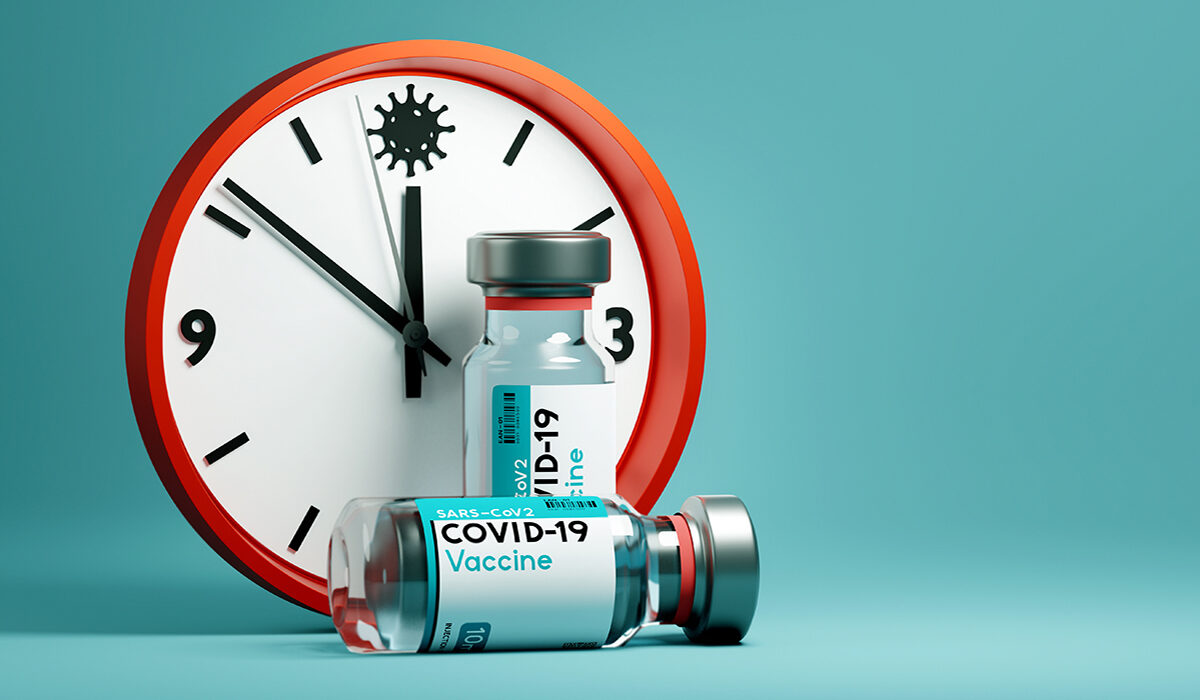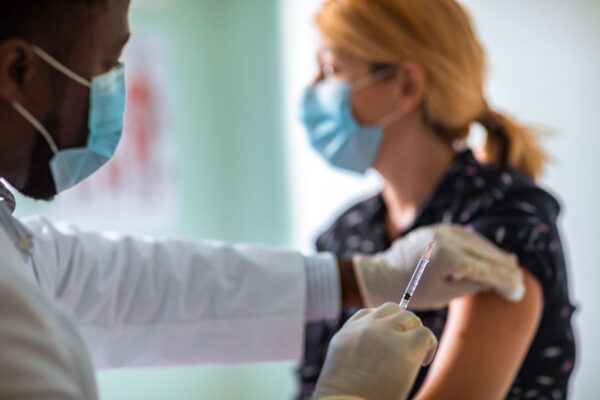A study from Washington University School of Medicine in St. Louis indicates that the COVID-19 mRNA vaccine may be more effective at preventing infections if doses are given around the middle of the day rather than at other times. The researchers believe circadian rhythm — the natural cycle of physical and other changes our bodies go through in a 24-hour period — may affect the body’s response to the vaccine.
Further, they found that the correlation was strongest in children and teenagers, as well as adults over age 50.
The study is published April 25 in The Journal of Clinical Investigation.
“This type of information may be critical during a mass vaccination campaign, because if you can target priority groups — such as the young and the elderly, who our data suggest stand to benefit the most from midday COVID-19 vaccines — and vaccinate them during optimal times of day, that should create a significant societal benefit in reducing breakthrough infections,” said senior author Jeffrey A. Haspel, MD, PhD, an associate professor of medicine in the Division of Pulmonary & Critical Care Medicine. “Our data is specific to COVID-19 vaccination, but there are some small studies that also suggest vaccination for influenza may be more effective earlier in the day. Since these trends track with a basic biological phenomenon, it is possible this pattern is reflective of vaccinations in general. But we need more research to confirm that.”
The study included data from more than 1.5 million people over age 12 who were enrolled in a large, Israeli health insurance plan. Nearly all had received the Pfizer mRNA vaccine. In Israel, the fourth dose (sometimes referred to as the second booster) was only offered to immunocompromised patients and older, healthy adults. For analysis purposes, morning was considered 8 a.m. to noon; afternoon was noon to 4 p.m.; and evening was 4 to 7 p.m.
Among older adults and people who were immunosuppressed, each of whom had received a fourth vaccine dose, more hospitalizations were seen among those who had received the fourth shot after 4 p.m.
Depending on a person’s age, the vaccine’s effectiveness improved from 8.6% to 25% when given around the middle of the day, compared with when given in the evening. To give an idea of the size of this effect on a population scale, the researchers estimated that moving 18 to 55 people from the least favorable vaccination time frame (4 to 7 p.m.) to the most favorable time frame (10 a.m. to 2 p.m.) would prevent one post-vaccination infection.
“In a pandemic, preventing any infection is desirable, because it slows the spread of the virus,” Haspel said. “Over hundreds of millions of people, a benefit the size we estimated can have a huge impact. Based on our large data set, for children and older adults in particular, it can’t hurt to try to have them vaccinated in the late morning and early afternoon.”
The researchers found this general pattern remained consistent when they controlled for sex and pre-existing conditions. The benefit also was present for adults in the middle of the age range, but the size of the effect was smaller.
Basic research in mice and other organisms, including work in Haspel’s lab, has demonstrated that the biological clock regulates how some genes are expressed, dialing them up and down in a wave pattern depending on the time of day. Various components of the immune system show these day-night rhythms, including innate inflammatory responses, the movement of immune cells from the bone marrow to various organs and lymph nodes, and how T cells respond to outside invaders.
“This observational study can’t demonstrate whether any of these specific immune system rhythms are responsible for the cycling we see in vaccine effectiveness,” Haspel said. “But we’re very interested in investigating these questions further.”
This work was supported by the National Institutes of Health (NIH), grant numbers R01 HL135846 and R01 HL152968; and internal funds from the Department of Medicine at Washington University School of Medicine in St. Louis.
Hazan G, Duek OA, Alapi H, Mok H, Ganninger A, Ostendorf E, Gierasch C, Chodick G, Greenberg D, Haspel JA. Biological rhythms in COVID-19 vaccine effectiveness in an observational cohort study of 1.5 million patients. The Journal of Clinical Investigation. April 25, 2023.
About Washington University School of Medicine
WashU Medicine is a global leader in academic medicine, including biomedical research, patient care and educational programs with 2,800 faculty. Its National Institutes of Health (NIH) research funding portfolio is the third largest among U.S. medical schools, has grown 52% in the last six years, and, together with institutional investment, WashU Medicine commits well over $1 billion annually to basic and clinical research innovation and training. Its faculty practice is consistently within the top five in the country, with more than 1,800 faculty physicians practicing at 65 locations and who are also the medical staffs of Barnes-Jewish and St. Louis Children’s hospitals of BJC HealthCare. WashU Medicine has a storied history in MD/PhD training, recently dedicated $100 million to scholarships and curriculum renewal for its medical students, and is home to top-notch training programs in every medical subspecialty as well as physical therapy, occupational therapy, and audiology and communications sciences.



